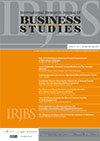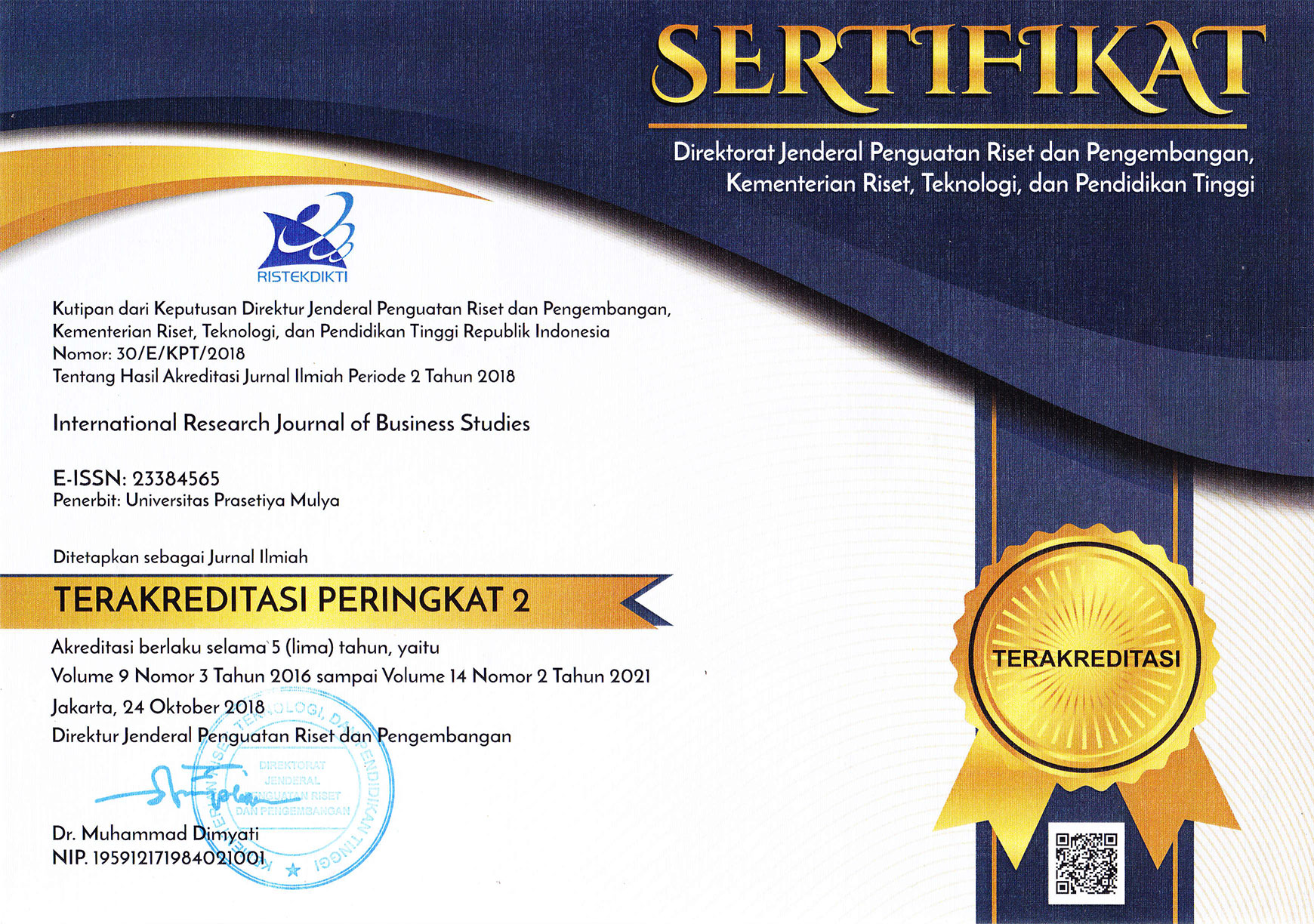Political Connection and BPD Performance
DOI:
https://doi.org/10.21632/irjbs.16.3.289-298Keywords:
Political Connection, BPD, GovernmentAbstract
The political situation that stable and conducive simplify business activities of a company politics and vice versa can be facilitated by the existence of good business. The relationship is what eventually called a political connection. Business relationship with politics has a very close relationship to harmony of an economy. The sample in this study is board members in 26 BPD during the year 2010 to 2014. We use political connected as an independent variable, the political connected is the board are coming from government, BPD is owned by government so the board with government background is identified as a political connected. The dependent variables are return on asset, return on equity and non-performing loan. This study uses firm size as a control variable. This study is expected to give a contribution to the topics of political connection and give a recommendation to government how to choice the member of board.
References
Agrawal, A., & Knoeber, C. R. (1996) ‘Firm performance and mechanisms to control agency problems between managers and shareholders’, Journal of Financial and Qualitative Analysis, 31 (3), 377–397.
Bertrand, Marianne, Antoinette Schoar, and David Thesmar. (2007) ‘Banking Deregulation and Industry Structure: Evidence from the French Banking Reforms of 1985’, Journal of Finance, 62 (2), 597–628.
Chaney, P.K., Faccio, M., Parsley, D., (2011)’The quality of accounting information in politically connected firms. Journal of Accounting and Economics 61, 58-76.
Chen, L., Zeng, J., Xu, D., Zhao, Z., & Guo, J.. (2010) ‘Macronutrient Deficiency Symptoms In Betula Alnoides Seedlings’, Journal of Tropical Forest Science, 22(4), 403–413.
El Ghoul, S., O. Guedhami, C.Y. Kwok, and D. R. Mishra (2011). ‘Does corporate social responsibility affect the cost of capital?’, Journal of Banking & Finance 35: 2388-2406.
Faccio, M. (2010) ’Differences between Politically Connected and Non connected Firms: A Cross-Country Analysis’, Financial Management, 39: 905–928
Faccio, M., Masulis, R. W. And Mcconnell, J. J. (2006) ‘Political Connections and Corporate Bailouts’, The Journal of Finance, 61: 2597–2635.
Fama, E. F.. (1978) ‘The Effects of a Firm's Investment and Financing Decisions on the Welfare of Its Security Holders’, The American Economic Review, 68(3), 272–284.
Fisman, Raymond. (2001) ’Estimating the Value of Political Connections’, American Economic Review 91, 4: 1095-1 102.
Friedman, J.H. (2002) ‘Stochastic Gradient Boosting’, Computational Statistics and Data Analysis 38(4):367-378.
Goldman, C., E. Stuart, I. Hoffman, M. Fuller and M. Billingsley (2011) ‘Interactions between Energy Efficiency programs funded under the Recovery Act and Utility-customer funded’, Energy Efficiency Programs, Lawrence Berkeley National Laboratory: LBNL-4322E, March.
Gomez, E. T., and K.S. Jomo. (1997). Malaysia’s Political Economy: Politics, Patronage and Profits, First Edition (Cambridge University Press).
Guedhami, O., and Pittman, J. (2006). Ownership Concentration in Privatized Firms: The Role of Disclosure Standards, Auditor Choice, and Auditing Infrastructure, Journal of Accounting Research 44, 889-929.
Gul, F. A. (2006). Auditors' Response to Political Connections and Cronyism in Malaysia. Journal of Accounting Research, 44: 931–963
Iswandi. (1998). Bisnis Militer Orde Baru. Bandung : Remaja Rosdakarya
Jensen, M., & Meckling, W. (1976). Theory of the firm: managerial behaviour, agency cost and ownership structure. Journal of Financial Economics, 3, 305-350.
Jogiyanto, HM. (2009). Analisis dan Desain. Yogyakarta : Andi OFFSET
Leuz, C., & Oberholzer-Gee, F. (2006). Political relationships, global financing, and corporate transparency: Evidence from Indonesia, Journal of Financial Economics, 81(2), p. 411-439.
Liddle, W., R. (1997). Coercion, Co-optation, and the Management of Ethnic Relations in Indonesia, in Michael E. Brown and Sumit Ganguly, eds., Government Policies and Ethnic Relations in Asia and the Pacific, Cambridge, Massachusetts: The MIT Press, 1997, pp. 274-319.
Mobarak, A. and Purbasari, D., P. (2006). Corrupt protection for sale to firms: Evidence from Indonesia, Yale University, mimeograph
Qian, W., Burritt, R. and Monroe, G. (2011). Environmental management accounting in local government: A case of waste management, Accounting, Auditing & Accountability Journal, 24(1), 93-128.
Sharpe, A., Sharp, B., & Redford, N. (2003). Positioning & Partitioning – A Replication & Extension. ANZMAC Proceeding p.2546-2552
Snyder, C. R. (2000). Handbook of hope: Theory, measures, and applications. San Diego, CA: Academic Press.
Vroom, V H. (1964). Work and motivation. New York. Wiley. Carnegie Institute of Technology, Pittsburgh. PAJ
Yoshihara, K. (1988). The Rise of Ersatz Capitalism in South-East Asia. Singapore: Oxford University Press
Other sources:
Ridep Institute, Practices of Military Business, citing statistics from the planning bureau of the Ministry of Cooperatives, Small and Medium Enterprises, 2001
Tempo Magazine
Acts No. 2/2011
Downloads
Submitted
Published
How to Cite
Issue
Section
License
Copyright (c) 2024 Joy Elly Tulung, Dendi Ramdani

This work is licensed under a Creative Commons Attribution-ShareAlike 4.0 International License.
Journal Author(s) Rights
For IRJBS to publish and disseminate research articles, we need publishing rights (transferred from the author(s) to the publisher). This is determined by a publishing agreement between the Author(s) and IRJBS. This agreement deals with the transfer or license of the copyright of publishing to IRJBS, while Authors still retain significant rights to use and share their own published articles. IRJBS supports the need for authors to share, disseminate and maximize the impact of their research and these rights, in any databases.
As a journal Author, you have rights to many uses of your article, including use by your employing institute or company. These Author rights can be exercised without the need to obtain specific permission. Authors publishing in IRJBS journals have comprehensive rights to use their works for teaching and scholarly purposes without needing to seek permission, including:
- use for classroom teaching by Author or Author's institution and presentation at a meeting or conference and distributing copies to attendees;
- use for internal training by the author's company;
- distribution to colleagues for their research use;
- use in a subsequent compilation of the author's works;
- inclusion in a thesis or dissertation;
- reuse of portions or extracts from the article in other works (with full acknowledgment of the final article);
- preparation of derivative works (other than commercial purposes) (with full acknowledgment of the final article);
- voluntary posting on open websites operated by the author or the author’s institution for scholarly purposes,
(But it should follow the open access license of Creative Common CC-by-SA License).
Authors/Readers/Third Parties can copy and redistribute the material in any medium or format, as well as remix, transform, and build upon the material for any purpose, even commercially. Still, they must give appropriate credit (the name of the creator and attribution parties (authors' detail information), a copyright notice, an open access license notice, a disclaimer notice, and a link to the material), provide a link to the license, and indicate if changes were made (Publisher indicates the modification of the material (if any) and retain an indication of previous modifications.
Authors/Readers/Third Parties can read, print and download, redistribute or republish the article (e.g. display in a repository), translate the article, download for text and data mining purposes, reuse portions or extracts from the article in other works, sell or re-use for commercial purposes, remix, transform, or build upon the material, they must distribute their contributions under the same license as the original Creative Commons Attribution-ShareAlike (CC BY-SA).
This work is licensed under a Creative Commons Attribution-ShareAlike 4.0 International License.








